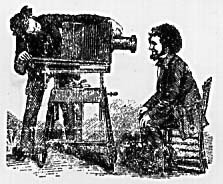1. Marjane Satrapi, author of Persepolis 1 and 2, tells her story of growing up during the Cultural Revolution in Iran during the 1980’s. Throughout Persepolis 1, we learn and experience the history and background of the revolution through Marjane’s childlike viewpoint. At the beginning of the story, the Iranians successfully protest against the shah’s rule, but their newfound freedom doesn’t last for long. They soon find themselves rebelling and having to deal with the new, restrictive lifestyle changes imposed by the Islamic fundamentalist regime that soon takes over the country after the downfall of the shah. Marjane’s story is one of bittersweet memories. The readers share her feelings of sorrow and horror when her beloved uncle gets executed and her close friend dies in a bombing but we also celebrate with her when she finds creative ways to rebel against the regime. At the end of Persepolis 1, however, her parents decide it would be better to send Marjane to a French school in Austria. Marjane leaves Iran, and spends most of her teenage years in Europe experimenting with drugs and learning about love in Persepolis 2. Marjane appreciates her individual and social liberties in her new environment, but nevertheless experiences an identity crisis as she struggles to fit in with her peers. When she returns back to Iran as an adult, she finds some happiness, but ultimately decides that the “Iran of today” is not right for her. At the end of Persepolis 2, she leaves Iran for good.
2. Some themes, main ideas, and issues in Perspolis 1 and 2:
Finding and defining one’s identity.
East and West (cultural differences)
Class differences
Political conscienceness
Importance of education/self-education
Anti-war themes
3. Satrapi often uses black backgrounds and outlines her characters and objects in white, effectively creating a dark atmosphere that is appropriate for a war-time story. Occasionally she would break up the traditional structure of the 9 squares per page and insert in larger and longer panels that lean towards a more interpretive understanding of an idea or an event. In these panels, Satrapi often uses geometric patterns and fluid lines to emphasize the emotions and feelings of her childhood. In addition, Satrapi uses symbolic images, such as stairs or slap hand marks to further assist our understanding of a theme or main idea in her graphic novel.
announcements
This blog was created by and for students in an Introduction to Cultural Studies class at the University of Washington. Through an investigation of urban experience and representation--in theory, in graphic novels and in our own "readings" of Seattle's University District--we considered the formation and history of cultural studies as an (anti)discipline, with a special emphasis on the questions, "What does cultural studies do, and how do you do cultural studies?"
If you'd like to know more about the class, the blog or our U-District artifact project, please contact Gabrielle Dean: gnodean@u.washington.edu.
If you'd like to know more about the class, the blog or our U-District artifact project, please contact Gabrielle Dean: gnodean@u.washington.edu.
Subscribe to:
Post Comments (Atom)
blog archive
-
▼
2008
(92)
-
▼
May
(26)
- Seattle U District: City Artifacts Map
- City Artifacts: What and Where?
- Researching History and its Representations...
- Palestine
- Persepolis 1 & 2
- Shutterbug Follies
- A Scanner Darkly
- Maus I & II
- A Scanner Darkly
- Maus I & II
- Shutterbug Follies
- Persepolis 1 and 2
- Postcards: True Stories that Never Happened
- Maus I & II
- Postcards: True Stories that Never Happened
- Persepolis 1 & 2
- Mail Order Bride
- Mail Order Bride: Mark Kalesniko
- Persepolis 1 & 2
- Shutterbug Follies
- Maus I and II
- Palestine
- Postcards: True Stories That Never Happened
- PALESTINE
- Postcards: True Stores That Never Happened
- Shutterbug Follies
-
▼
May
(26)

No comments:
Post a Comment